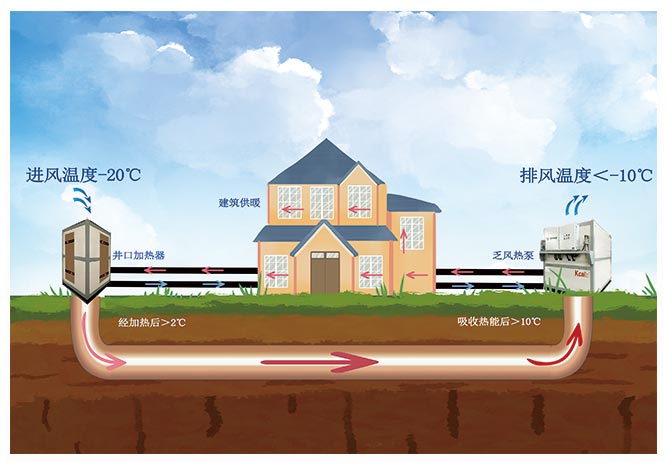The coal mine exhaust heat pump heating system is an environmentally friendly and efficient heating method, but to ensure its normal operation and meet actual heating needs, reasonable heat load calculation is required.
Before delving into the calculation methods, let's first understand why heat load calculation is crucial for the coal mine exhaust air heat pump heating system.
Heat load refers to the amount of heat that a building or area needs to supply under specific meteorological conditions to maintain indoor temperature within a comfortable range. The heat load calculation considers multiple factors such as temperature, humidity, building structure, insulation performance, and the characteristics of windows and doors.
The calculation of heat load has the following important purposes:
Ensure that the heating system has sufficient capacity to meet heating needs in cold weather and extreme weather conditions.
Avoid excessive system design, waste of energy and investment.
Provide accurate guidance for the selection, installation, and maintenance of heating systems.
Now, let's delve into the heat load calculation methods and steps of the coal mine exhaust air heat pump heating system.

Building information and data collection: Firstly, it is necessary to collect building information and data, including building plans, elevations, materials and insulation properties of walls, roofs, and floors, types and sizes of doors and windows, room usage, number of personnel, equipment load, etc. This information will serve as the basis for the calculation.
Temperature and humidity data: Obtain meteorological data of the location, including the lowest temperature and relative humidity during the cold season. These data will help determine the heat load under different meteorological conditions.
Heat conduction calculation: Calculate the heat transfer loss of a building structure through the thermal conductivity coefficient of building materials. This includes parts such as walls, roofs, floors, etc.
Air Permeability Calculation: Calculate the speed at which air passes through walls, windows, and doors in a building to determine the amount of heat transmitted.
Internal load calculation: Consider the impact of internal loads such as personnel activities, lighting, and equipment on indoor temperature.
Comprehensive calculation: Combine the above calculation results to obtain the heat load of each room or area under different meteorological conditions.
In order to simplify the process of heat load calculation, various professional software and tools can also be used, such as building simulation software, heat conduction calculation tools, etc. These tools can provide more accurate and efficient calculation results.
Through reasonable heat load calculation, the coal mine exhaust air heat pump heating system can more accurately meet heating needs, improve energy efficiency, reduce energy waste, and reduce operating costs. Heat load calculation is a key step in designing and operating a heating system, which is crucial for ensuring the reliability and performance of the system. Therefore, it is recommended to conduct detailed heat load calculations when planning and constructing a coal mine exhaust air heat pump heating system to achieve the best results.







Comment